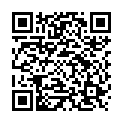|
|
|
| Module code: MST102 |
|
1V+1PA (2 hours per week) |
|
2 |
| Semester: 1 |
| Mandatory course: yes |
Language of instruction:
German |
Assessment:
Written exam, project work.
[updated 22.07.2012]
|
MST102 Mechatronics and Sensor Technology, Bachelor, ASPO 01.10.2005
, semester 1, mandatory course
|
30 class hours (= 22.5 clock hours) over a 15-week period.
The total student study time is 60 hours (equivalent to 2 ECTS credits).
There are therefore 37.5 hours available for class preparation and follow-up work and exam preparation.
|
Recommended prerequisites (modules):
None.
|
Recommended as prerequisite for:
MST202 Chemistry II with Lab Course
[updated 24.07.2012]
|
Module coordinator:
Prof. Dr. Rainer Eisenmann |
Lecturer: Prof. Dr. Rainer Eisenmann
[updated 01.10.2005]
|
Learning outcomes:
This module introduces students to the fundamentals of chemistry. In addition to teaching relevant terminology, the course will cover the most important materials and reactions. By applying simple rules, rote learning of formulae will be reduced to a minimum.
[updated 22.07.2012]
|
Module content:
- Substances and mixtures of substances; separation techniques; physical and chemical processes; atomic structure
- Material quantities; the mole concept; concentration
- Chemical bonding (ionic bonding; metal bonding; covalent bonding; bonding in complexes)
- Physical bonding (London forces; dipole-dipole and ion-dipole bonds; hydrogen bridges)
- Elementary reaction mechanisms (reactions of ions, acid-base reactions, redox reactions, radical reactions, nucleophilic and electrophilic reactions)
- Reaction rates and catalysis
- Chemical equilibrium and the law of mass action
- Electrochemistry (Faraday’s laws, electrochemical series, decomposition potential and overpotential)
- Important chemical compounds
- The nomenclature of organic chemistry
- Hazards associated with the handling of chemicals
[updated 22.07.2012]
|
Teaching methods/Media:
Lecture with demonstrations
[updated 22.07.2012]
|
Recommended or required reading:
G. u. F. Katzer: Chemisches Grundwissen Berufsfeld Chemie, Physik, Biologie
H.-D. Gutbrod, K. Kontermann, A. Pfänder: Chemie - Theorie und technische Anwendungen. Hamburg: Handwerk und Technik
R.E. Dickerson, I. Geis: Chemie – eine lebendige und anschauliche Einführung. Weinheim: VCH
[updated 22.07.2012]
|


